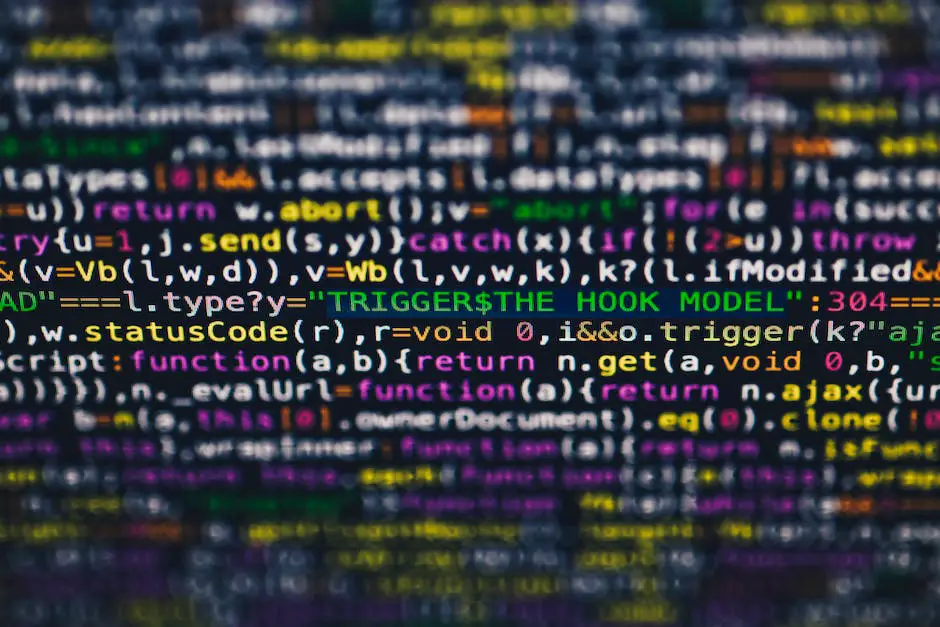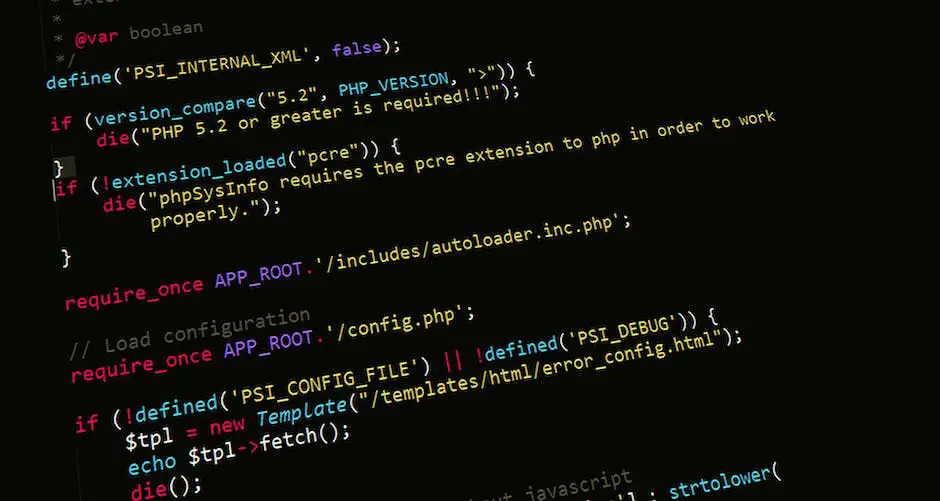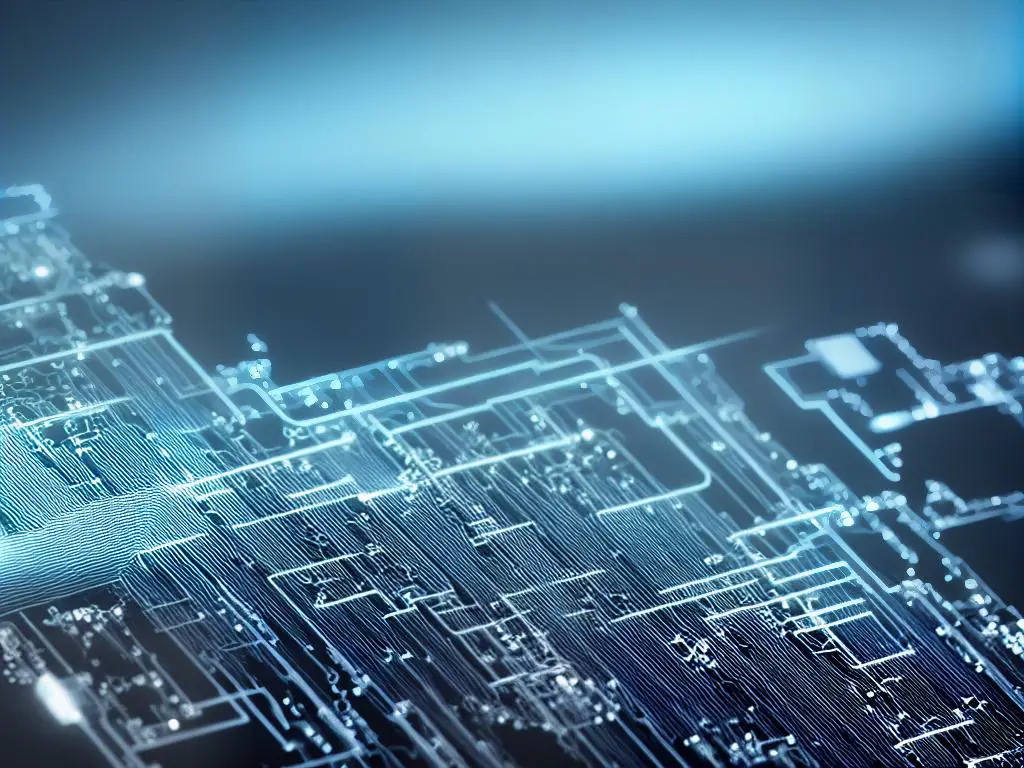In the fast-paced, ever-evolving world of software development, new technologies continually alter how professionals operate. Notably, Artificial Intelligence has started playing a pivotal role in altering the landscapes of numerous industries, including software development.
Undeniably, the evolution of coding practices and tools powered by AI has provided software professionals with refined efficiency and accuracy. This essay explores the growing intersection of AI and coding particularly within the context of GitHub code reviews, a crucial component of software development processes.
It uncovers the concept of AI pairing, its applications in GitHub code reviews, the benefits, limitations, practical examples, and future prospects. As the reader traverses through the text, he or she will gain a comprehensive understanding of AI’s role in code reviews and how to capitalize on it for superior results in software development.
Understanding AI in Coding
Table of Contents
- 1 Understanding AI in Coding
- 2 Introduction to GitHub and Code Reviews
- 3 AI Pairing in GitHub Code Reviews: Basics
- 4 Benefits and Limitations of AI Pairing in GitHub Code Reviews
- 4.0.1 Examining the Role of AI Pairing in GitHub Code Reviews
- 4.0.2 Benefits of AI Pairing in GitHub Code Reviews
- 4.0.3 1. Efficiency and Speed
- 4.0.4 2. Accuracy
- 4.0.5 3. Time Saving
- 4.0.6 4. Consistency
- 4.0.7 Limitations of AI Pairing in GitHub Code Reviews
- 4.0.8 1. Dependence on Predefined Patterns
- 4.0.9 2. Lack of Human Intuition
- 4.0.10 3. Risk of Overlooking Context-Specific Nuances
- 4.0.11 Wrapping Up
- 5 Case Studies and Practical Applications of AI Pairing in GitHub Code Reviews
- 5.0.1 AI Coupling in GitHub Code Reviews: Pioneering Code Quality Assurance
- 5.0.2 Case Study 1: Google’s Use of AI in Code Reviews
- 5.0.3 Case Study 2: GitHub’s Intelligent Code Reviews
- 5.0.4 Case Study 3: Facebook’s SapFix Augmenting Developer Capabilities
- 5.0.5 The Practical Benefits: Speed, Efficiency, and Accuracy
- 5.0.6 Implications and Future Prospects
- 6 The Future of AI Pairing in GitHub Code Reviews
Understanding AI in Coding:
AI (artificial intelligence) exists in many forms and its applications are steadily making their mark in numerous sectors, including the realm of coding and software development.
Traditionally, software development has been heavily dependent on human intervention – from the brainstorming phase and designing prototypes to coding, testing, debugging, and maintenance. However, advancements in artificial intelligence have revolutionized these processes, promising significant improvements in efficiency and accuracy.
The application of AI in coding primarily serves to automate repetitive tasks, improve code quality, and accelerate the development process. AI-supported technologies such as machine learning, deep learning, natural language processing, and predictive analytics are particularly beneficial in this context. Their functions range from automating code generation and identifying bugs or errors, to providing real-time assistance and predicting future issues.
These technologies offer several advantages. For instance, they can reduce human workload and error rates significantly by automating certain coding tasks. Furthermore, the predictive function of AI can help developers identify potential problems and fix them before they escalate, thus saving valuable time and resources.
However, the integration of AI into coding is not without drawbacks. Dependence on AI can result in a decrease in human oversight which may, in turn, lead to unpredicted problems caused by a lack of understanding of AI’s decision-making process. Such issues underscore the need to strike a balance between automation and human intervention.
The Integration of AI in GitHub’s Code Review Process:
GitHub, an extensively laid platform in the realm of software development, has recently adopted AI technology to optimize the code review process. Code reviews are pivotal in the development terrain, they help in bug detection, uphold coding standards, and encourage knowledge transfer within a team.
AI is progressively layered into this process through AI pairing. Here, a publicly accessible code is utilized to train the AI model, which later collaborates with human developers for code verification. This synthesis of AI and human intellect brings forth several benefits.
The inclusion of AI accelerates the review process, making it expeditious and well-organized. It contributes suggestions to improve the code quality, fortify its security, and can foresee potential flaws and weak spots. Given it can swiftly scan and process massive amounts of code, it could considerably trim down the time devoted to reviews.
However, the involvement of AI in code reviews poses new quandaries. It is paramount for developers and organizations to understand the AI’s functioning to avert excessive reliance on its suggestions. The AI’s analysis can be valuable, but experienced developers must critically evaluate it.
Despite its various benefits, AI isn’t infallible. Issues like misinterpretations due to complexity or the inability to discern nuanced instructions could arise. Thus, despite AI’s ability to significantly improve the code review process on GitHub or other platforms, it should ideally be viewed as a supporting tool designed to assist, but not replace human reviewers.

Introduction to GitHub and Code Reviews
Understanding GitHub: An Essential Resource for Developers
GitHub is a global platform favored by developers for its top-notch version control and source code management. Conceived by Chris Wanstrath, P.J. Hyett, Tom Preston-Werner, and Scott Chacon, GitHub offers a cloud-hosted service that enables developers to control, save, and distribute their code effectively. Its standout features comprise bug tracking, task management, and wiki space, with the most pivotal being the code review functionality.
GitHub’s Code Review Functionality: Assessing the Quality of Code
One of the prominent features offered by GitHub is its code review functionality. A code review, as the term suggests, is a systematic examination of computer source code, primarily performed to find and fix mistakes overlooked during the initial development phase. This process significantly improves the overall quality of the software and has become a routine procedure in modern software development.
The main purposes of a code review are to detect bugs, check for coding standard violations, and evaluate the design and implementation of the software. During a code review, developers can leave comments, suggest changes, and approve or request changes to the code, facilitating detailed feedback for enhanced code quality.
The Importance and Benefits of Code Reviews
Code reviews are a vital component of software development for several reasons. Primarily, they help maintain the quality of the code and ensure that it meets the required standards. By catching errors early in the process, code reviews mitigate the risk of future problems and increase the overall reliability of the software.
Furthermore, code reviews provide an excellent learning opportunity for the developer. They promote knowledge sharing and improve the skill set of the entire team. Through a collaborative approach to finding solutions, they nurture a culture of collective responsibility and teamwork.
Possible Challenges in Code Reviews
Despite their benefits, code reviews can come with their own set of challenges. For instance, the process can be consuming time as it requires meticulous examination by a team of developers. It could also lead to disagreements over coding style or approaches to problem-solving, sometimes resulting in delayed deliveries. Moreover, given human tendency, some minor or even significant errors might be overlooked, which is where AI pairing steps in.
AI Pairing in GitHub Code Reviews
To overcome the challenges posed by traditional code reviews, GitHub has started leveraging artificial intelligence (AI) in its code review functionality. AI pairing in code review entails using intelligent systems that can identify minor and major code errors, verify coding standards, and suggest necessary changes to the developers.
The use of AI makes code reviewing more efficient and less time-consuming. It affords the developer more time to focus on higher-level tasks such as designing algorithms and writing code, while AI takes care of the code review process. Furthermore, AI reduces human bias or differences in code reviewing styles, providing more consistent and standard code checks.
AI pairing not only helps in detecting and resolving errors but also aids in predicting potential future issues that could arise due to the current coding structure. By predicting and addressing these potential problems, AI assists in enhancing the robustness of the software.
Wrapping Up
AI’s advent has brought a dramatic shift to the way GitHub handles code reviewing. By combining AI’s capabilities with human expertise, code reviews’ efficiency has significantly increased. This AI-manpower merger has reduced error occurrences and paved the way for the creation of top-tier software.

AI Pairing in GitHub Code Reviews: Basics
Diving Deeper: AI Collaboration in GitHub Code Reviews
Artificial Intelligence (AI) stands as a rising trend significantly influencing several sectors, including the realm of software development. Its impact becomes explicitly visible in places like GitHub where code reviews are a constant process. The idea of AI collaboration, where Artificial intelligence streamlines workflows and improves results in conjunction with human users, has progressively found its position in GitHub’s code reviewing.
How AI Pairing Works
In AI pairing, an AI system works in tandem with a human user as they proceed through tasks. These AI ‘pairs’ can carry out a variety of functions, including reviewing code, suggesting improvements, spotting errors, and even learning from the humans they work with to enhance their performance over time. This turns the traditionally manual process of code reviewing into a more efficient, effective procedure.
The Mechanics Behind AI Pairing
By utilizing machine learning (a subset of AI), AI pairs can steadily learn from the actions and decisions of their human counterparts. Over time, they can refine their understanding of good coding practices and develop their ability to spot potential issues within the code. This system hinges on the power of neural networks and pattern recognition, allowing the AI to evolve its understanding and effectively ‘learn,’ much like how a human might.
AI Pairing in GitHub Code Reviews
GitHub, a web-based hosting service for development projects, frequently requires code reviews to maintain code quality and spot potential errors. With the help of AI pairing, these code reviews become exponentially more efficient and accurate. The AI can perform initial sweeps of the code, spotting common errors and suggesting improvements before a human reviewer ever looks at the code, thus speeding up the review process and reducing the risk of human error.
During reviews, AI pairs work alongside human developers, scanning the code and suggesting potential edits or improvements. This allows the human reviewers to focus their attention on more complex issues, resulting in a more thorough and efficient review process.
Revolutionizing Software Development through AI and GitHub
The collaboration of AI and GitHub heralds a new era in the software development landscape, particularly in the aspect of code reviews. Integrating AI into this GitHub process guarantees not just swifter and more efficient code reviews, but it also ensures a remarkable improvement in code quality.
To say that AI pairing within the GitHub milieu boosts productivity is an understatement; its actual value lies in its ability to redefine the conventional approach to code reviews, while simultaneously raising the bar for both code quality and efficiency.
Benefits and Limitations of AI Pairing in GitHub Code Reviews
Examining the Role of AI Pairing in GitHub Code Reviews
Termed as ‘automated peer review’, AI pairing has recalibrated the method developers employ in GitHub code reviews. As a revolutionary technology, it introduces strategic solutions designed to refine workflows, promote superior code quality, and accelerate the pace of software delivery. Nonetheless, like any other technology, AI pairing is not without its set of boons and banes in its application to GitHub code reviews.
Benefits of AI Pairing in GitHub Code Reviews
AI pairing undoubtedly brings a range of benefits to developers during the GitHub code reviews.
1. Efficiency and Speed
AI pairing dramatically increases efficiency and speed during code reviews. It can analyze large sets of code in a fraction of the time it would take a human reviewer. This reduces the lag between submitting code for review and receiving feedback. In turn, faster reviews can accelerate development timelines and product delivery.
2. Accuracy
AI’s algorithms can find patterns and detect errors or anomalies more precisely than humans, leading to a more accurate code review. It can spot common syntax errors, performance issues, and potential security vulnerabilities that might otherwise be overlooked.
3. Time Saving
AI pairing for code reviews saves developers the time and effort often spent on manual and tedious tasks. This allows them to focus more on strategic and creative aspects of programming.
4. Consistency
AI pairing ensures consistency by neutrally applying predefined sets of rules and principles in code reviews. Unlike human reviewers whose assessment can be influenced by biases or fluctuations in focus and energy, AI maintains a consistent level of analysis regardless of the scale or complexity of the project.
Limitations of AI Pairing in GitHub Code Reviews
Despite the aforementioned benefits, AI pairing in GitHub code reviews has its limitations which are crucial to acknowledge.
1. Dependence on Predefined Patterns
AI pairing primarily depends on predefined patterns to review codes. While this works for identifying known issues, it falls short when encountering new or unique problems that haven’t been programmed into its algorithms.
2. Lack of Human Intuition
AI tools, for all their sophistication, lack human intuition. They don’t always understand the context or logic behind certain codes. As a result, they may not catch deeper, logical errors in complex coding situations or innovative approaches that diverge from conventional coding patterns.
3. Risk of Overlooking Context-Specific Nuances
AI pairing in GitHub code reviews may overlook context-specific nuances that a human reviewer could catch. This could result in the overlooking of important details, potentially compromising the quality and functionality of the code.
Wrapping Up
In the realm of GitHub code reviews, AI pairing emerges as an innovative and potent strategy. This technology yields several considerable advantages, from enhanced efficiency and speed to heightened consistency and precision. In spite of these merits, the need for human participation and instincts in the code review process cannot be understated. The marriage of AI capabilities and human intelligence in the code review pipeline allows software developers to fine-tune their processes for better development outcomes.

Case Studies and Practical Applications of AI Pairing in GitHub Code Reviews
AI Coupling in GitHub Code Reviews: Pioneering Code Quality Assurance
Employing AI pairing in GitHub code reviews signifies a revolutionary shift that harnesses the collective power of human know-how and artificial intelligence. This state-of-the-art technology bestows developers with the tools to enhance code review workflows, facilitate quicker delivery schedules, boost efficiency, and foster superior code quality.
Case Study 1: Google’s Use of AI in Code Reviews
Google is a pioneer in AI usage for its services, and the inclusion of AI in GitHub code reviews is no exception. The software giant leverages AI tools to review millions of lines of code daily. The AI helps identify bugs, vulnerabilities, and areas for code optimization. As a result, Google lays claim to better product quality and faster time to market, all while minimizing human error.
Case Study 2: GitHub’s Intelligent Code Reviews
GitHub itself has walked the talk when it comes to employing AI in code reviews. In 2020, it launched Copilot, an AI-powered code assistant. Based on a system called Codex, developed by OpenAI, Copilot suggests snippets of code to developers as they type programs. This real-time feedback significantly enhances the productivity of developers and the proficiency of their code.
Case Study 3: Facebook’s SapFix Augmenting Developer Capabilities
Another tech titan, Facebook, deployed an AI tool known as SapFix to improve its code review process. SapFix was designed to automatically generate fixes for identified bugs, drastically reducing the time and effort required for manual reviews. By using AI to take over the routine task of bug fixing, Facebook has managed to free up its developers to focus on more challenging, creative coding tasks.
The Practical Benefits: Speed, Efficiency, and Accuracy
Adopting AI pairing in GitHub code reviews offers numerous practical benefits. As the case studies above highlight, AI can help identify and rectify bugs quickly, thereby reducing the likelihood of shipping faulty software. It also reduces the time spent on reviewing code, giving developers more time to focus on problem-solving and core programming tasks.
Moreover, AI is consistent – it does not tire or lose focus like a human reviewer might after hours of sifting through code. Thus, it brings a degree of accuracy and objectivity to the code review process, void of human bias or fatigue.
Implications and Future Prospects
In the modern era of software development, AI’s integration into GitHub code reviews has turned out to be beneficial for all parties involved. The precision and efficiency offered by AI-assisted reviews have not only been lauded by developers but have also proven advantageous for organizations, enabling them to deliver enhanced software quality at a quicker pace. Consequently, end users experience dependable and superior products.
As advancements in AI persist, so will its capabilities within code reviews. From powering advanced bug-detection mechanisms to offering real-time coding guidance, the opportunities that lie ahead are vast. The melding of human expertise with the competencies of AI establishes a bright future for code reviews on GitHub.

The Future of AI Pairing in GitHub Code Reviews
Understanding AI Pairing in GitHub Code Reviews
GitHub code reviews are a cornerstone in the realm of software development, entailing a meticulous inspection of computer source code. The aim? To identify and rectify any errors that might have been overlooked during the preliminary development phase, ultimately improving the final software quality.
In this context, AI Pairing signifies a synergistic collaboration between human programmers and Artificial Intelligence for scrutinizing the code. This partnership leans heavily on the use of AI to aid developers during code review processes by offering insightful suggestions and spotting potential errors or issues proactively.
Evolving AI Technology and GitHub Code Reviews
With the exponential growth and evolution of AI technology, code review processes in GitHub are expected to undergo remarkable changes. One such change pertains to the rise of automated code reviews—where AI systems sift through code to identify critical issues that often go unnoticed by human eyes.
AI technology is also forecasted to grow in terms of predictive analysis. This means AI systems could predict potential issues in the coding process even before they arise, providing preventative solutions and saving programmers significant amounts of time.
For instance, AI could help determine which parts of a new code might be problematic or lead to software bugs, based on pattern recognition from similar past instances. This could streamline the entire code review process, making it more efficient and effective.
Future Possibilities of AI Pairing in GitHub Code Reviews
As AI technology continues to advance and learn from new data, AI pairing in GitHub code reviews is speculated to become much more sophisticated and accurate. One can anticipate a future where AI is not only identifying existing issues in the code but also predicting future bugs or problems.
An intriguing possibility is the development of AI systems that can write and review their own code. While this is a far-reaching prediction, advancements in machine learning and AI capabilities make this a potential reality.
In addition, AI might enable more personalized code reviews in the future. Just as AI algorithms learn to understand user behavior in other digital platforms, they could also adapt to an individual developer’s coding style. This could further refine the code review process, highlighting unique issues tailored to the developer’s specific coding tendencies.
The implementation of these AI-powered tools could ultimately lead to more accurate, faster, and efficient code reviews.
Preparing for the Future: Role of Professionals
The expected developments in AI pairing for GitHub code reviews will require professionals to adapt and update their skills accordingly. While AI is forecasted to automate many aspects of code reviews, it will not negate the need for human involvement. Instead, it will enhance the human role in driving high-quality coding practices.
Professionals will need to have a solid understanding of how AI tools work in order to effectively integrate them into their code review processes. This includes learning to trust AI recommendations and understanding when to defer to AI versus when human judgment is needed.
There will also be a need to continuously monitor and fine-tune AI tools as they learn and adapt to the developer’s coding styles and new programming practices. This underlines the importance of continuous learning and adaptability in the ever-evolving programming environment.
In conclusion, the future of AI pairing in GitHub code reviews holds promising potential for professionals willing to adapt, learn, and evolve with cutting-edge technology. By effectively leveraging AI’s power, developers can ensure a more efficient and accurate code review process.

As the junction of AI and GitHub code reviews grows stronger, developers stand at the threshold of a technological revolution that promises greater efficacy, precision, and innovation in code review processes. With the steady progress in AI technologies, developers should ready themselves for more sophisticated AI interactions in their daily tasks.
While we need to remain vigilant of the accompanying challenges, the potential benefits make this an exciting opportunity for software professionals. This investigation into AI pairing in GitHub code reviews has equipped you with the understanding needed to navigate these changing tides, preparing you to embrace the future of software development confidently.

I’m Dave, a passionate advocate and follower of all things AI. I am captivated by the marvels of artificial intelligence and how it continues to revolutionize our world every single day.
My fascination extends across the entire AI spectrum, but I have a special place in my heart for AgentGPT and AutoGPT. I am consistently amazed by the power and versatility of these tools, and I believe they hold the key to transforming how we interact with information and each other.
As I continue my journey in the vast world of AI, I look forward to exploring the ever-evolving capabilities of these technologies and sharing my insights and learnings with all of you. So let’s dive deep into the realm of AI together, and discover the limitless possibilities it offers!
Interests: Artificial Intelligence, AgentGPT, AutoGPT, Machine Learning, Natural Language Processing, Deep Learning, Conversational AI.


